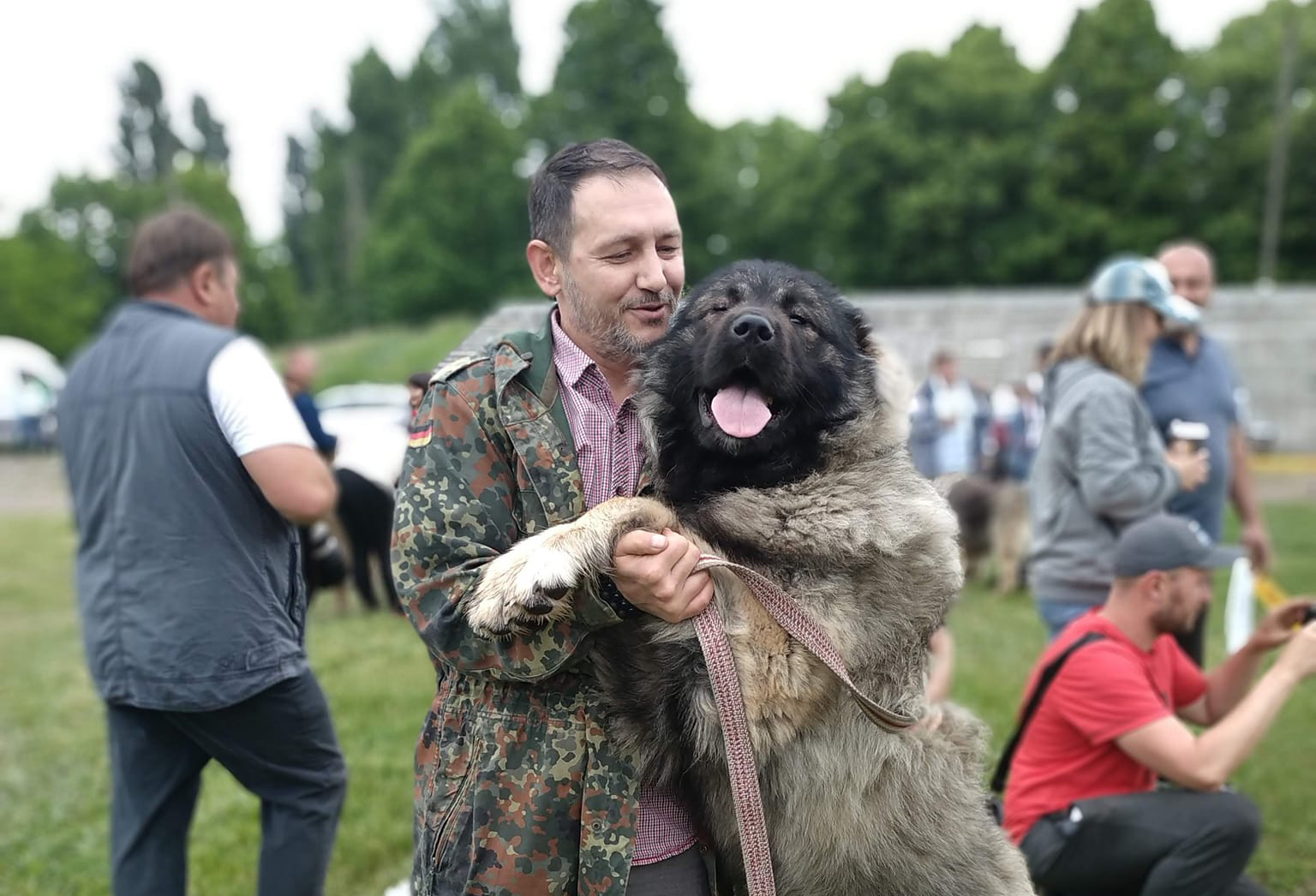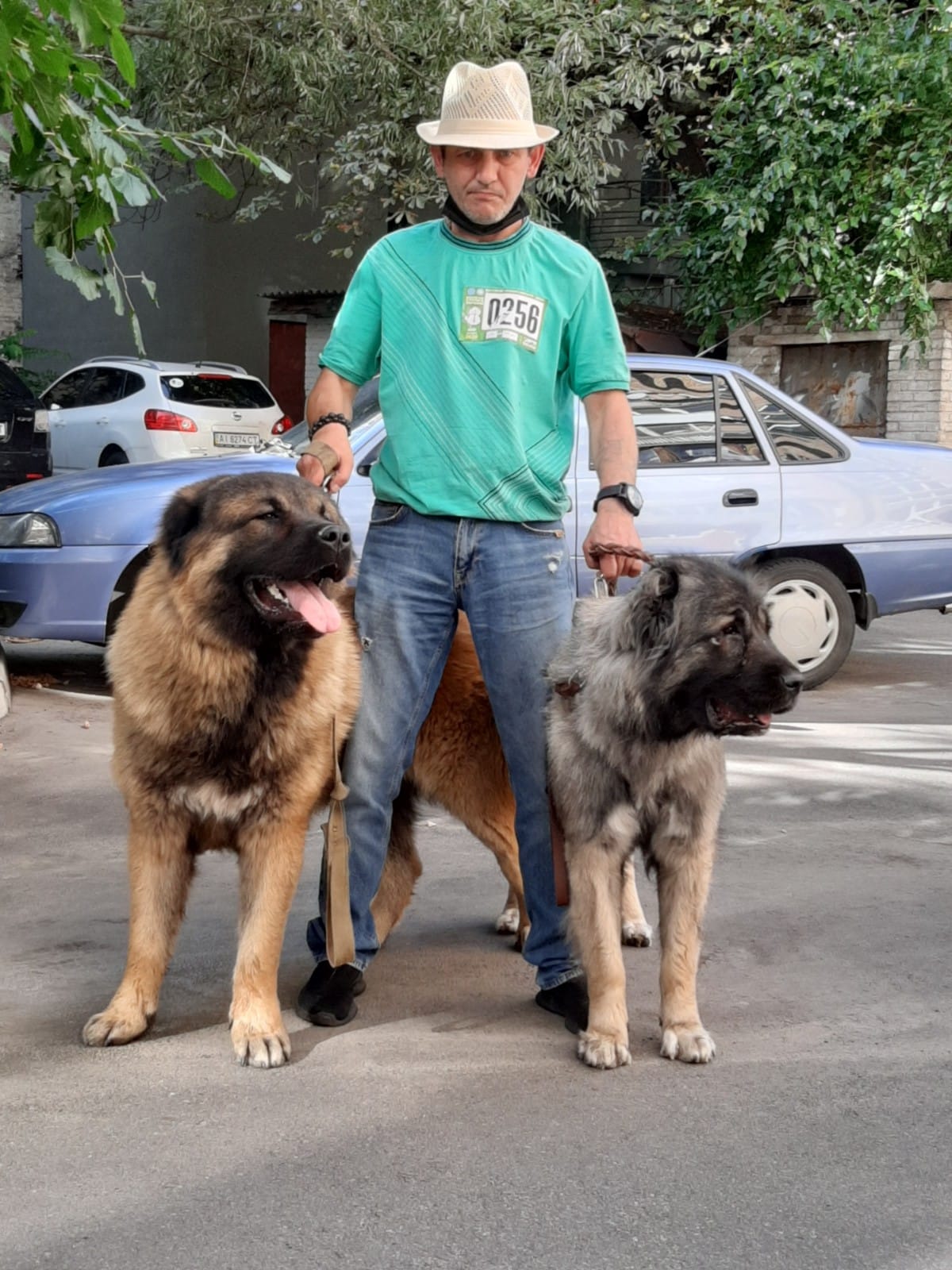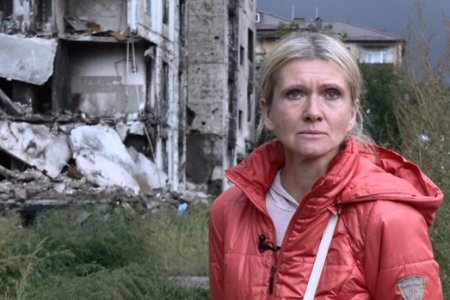
My name is Serhii Neboha, and I am the owner of the Caucasian Shepherd Kennel “Tree of Life” in Cherkasy, Ukraine.
— How long have you been breeding dogs?
— I have been in professional cynology for 15 years. Dogs from my kennel represent our country in international competitions. By the way, for the last five years, I have been supplying dogs for the Ministry of Defense of Ukraine, Ukroboronprom. Our graduates also serve in law enforcement units.
— Did the events of 2014 affect the cynology of Ukraine?
— The fact is that the cynology of the countries of the former Soviet Union has always been divided. Russian cynologists looked at us with disdain. But I never understood why Ukrainian cynology is equated with third-world countries while Belarus and Russia are first-world. We have always had fruitful breeding work, and our livestock has always been competitive. Our dogs are known all over the world.
In 2014, a Russian narrative appeared: “Dogs are out of politics and have nothing to do with it.” Firstly, how can dogs have nothing to do with it if the cynology of the country represents the face of this country? Secondly, cynology has always been under the umbrella of power structures. A simple example: the President of Turkmenistan flies to visit Putin, and he gives him an Alabai puppy. So how are dogs out of politics?
In Ukraine, cynology is divided. I am talking about cynologists from the Kharkiv region, Donbas, and other Russian-speaking areas. Many people yearn for brotherly nations. I don't quite understand them, but fortunately, many have changed their minds.
Unfortunately, many tried to sit on two chairs and were members of the RKF and KSU [Kennel clubs of Russia and Ukraine]. Many cynologists from the Donbas shamelessly took both the Russian humanitarian aid and ours, going back and forth.
For six months, I asked these people a straightforward question: “Good people. How will you run with us in the same rings and be in the cynology of Ukraine after everything that happened?” I helped to evacuate nurseries from the Kharkiv region, Mariupol, Berdiansk, Kherson, and Zaporizhzhia. Many of my graduates [I mean dogs] have always been in the Donbas. Unfortunately, many of them no longer exist. No owners, no animals. There was an excellent cynological school in Kharkiv, Donetsk, and Mariupol, but only a few animals survived.
— What was February 24th like for you?
— When the full-scale aggression began, I was with my family in the nursery. At half past six in the morning, I got a call from my colleagues from the Kharkiv region, my friend [also the owner of the kennel]. She breeds Caucasian shepherd dogs. She told me with tears in her eyes: “Serhii Valeriiovych, Russian soldiers and tanks are moving in front of my windows.” Unfortunately, we no longer have contact with her. The village where she lived is no more, and her fate is unknown to me. I asked the guys who liberated the Kharkiv region: “Learn at least something.” There was one answer: “Only ruins are here, nothing else.”
— Was your kennel under occupation?
— Fortunately, I was not in the occupation, but the question was: “What to do?”
I was offered to evacuate permanently with the dogs to Canada. However, I didn't want to leave my country. Also, it's easy to say: “Come.” Anyone who has not had 20 dogs weighing 50-100 kilograms has no idea what it means to take them all and go into the unknown. It is a special operation to go to Kyiv with only three dogs. It is a costly hobby. I cannot call it a business in our country. Usually, this is done by fanatics. Anyone who has kennels with large dogs understands that it is challenging to transport such a significant number of dogs. First, you need money. Secondly, you need a sizeable regular bus. Thirdly, do you remember what happened in the first days of the war? There was panic, and people, let alone dogs, could not be taken out. But I have seen many examples of humanity.
My acquaintances in Bucha, Irpin, and Borodianka abandoned everything: expensive cars, estates, and in slippers, with a passport in their “mouths,” dragged their children and animals. So, there were cases when people abandoned animals, but I am very proud many Ukrainians showed such a great example of humanity.
Many volunteers died in the Kyiv region. As a rule, they were our progressive youth who were not afraid to take out animals and people. On the twenty-fourth, my son and I signed up for the Territorial Defense because I didn't want to flee. I only asked my friends abroad to help my family move out. I went to the vet on the twenty-fifth and asked for twenty ampoules of sleeping pills. It was a tough decision, and I still cannot forgive myself. The fact is that I already knew how dogs were killed, how they were mocked, and how entire farms were burned in the Kyiv region. Communication with many colleagues, with whom I still drank coffee on the Kristall half a year ago, was broken. Many of them are no longer alive.
I knew they would be shot and tortured if my village was occupied, and they discovered that these were my dogs [Serhii Valeriiovych Neboha]. So I decided to euthanize all of my livestock.
I didn't have to do it, but I was ready. I will never forgive my colleagues from Russia, who clapped their hands at the beginning of the war: “You had it coming, damned Banderas.” I will never forgive these people.
Some condemned me, saying, why didn’t you give the dogs away? The fact is that it is almost impossible to give away such dogs as Caucasian Shepherd Dogs. For 20-21 years, I managed to give about five adult dogs into good hands. I think I did the impossible. It is almost unfeasible to find a place for a Caucasian (leader dog and monogamous). Now I have fifty dogs that are waiting for their owners. I was ready to distribute them, but who was prepared to take them? If you are not, don't judge me.
— What motivated you to create the film “War on Four Pows?”
— Everything is very simple. Many of my colleagues in the Kyiv region were my competitors in ordinary civilian life. We weren't friends. For example, there is the world-famous kennel “Daur Don”, with 70 dogs, 7 World Champions, and 15 European Champions. The Russians did not have this, although they say this breed is former Soviet. It so happened that I was worried about them the most because they were in Zherev [Ivankivsky district]. This village no longer exists. From the first day, there was no contact with them. They were the first ones I went to help when the Kyiv region was liberated. It was the kennel of Caucasian shepherd dogs “Daur Don”. They were surprised when I finally got through the minefields. That's where this movie was conceived.
I was shooting minefields, and when I got to them, I already had a small piece of material. Then I went to the second, third, fifth, and tenth kennels. We corresponded on Facebook and Telegram. I knew who was where, and on the way, I delivered meat and feed at about five nurseries.
There was a nursery with a Moscow sentry, where a woman had a tank in the yard. The Russians once said: “Your dogs prevent us from sleeping with their barking; we will shoot them so that you don’t suffer.”
Therefore, I decided this should be recorded because these facts will come in court one day.
— Why did you decide to save dogs and not people?
— I can’t say that I saved only dogs. I rescued dogs with owners. Animals suffer and die, suffer like people. Only a human can say “Help,” but a dog or a cat will not say this. Unfortunately, only a handful of people are providing such help right now. I am very grateful to the European countries that allowed me to cross the border regardless of pedigrees and veterinary passports. I am very thankful to the European community for accepting such a massive number of dogs.

— In your opinion, did Russians deliberately destroy animals?
— I have indisputable facts. When the projectile flies into the enclosure, I understand that the bullet is a fool. But I was in one village, in Borodianka, talking with a man who showed me a skin with the head of his young shepherd German. The Buryats ate him. I was surprised, and he replied: “Why are you surprised? We have this in every yard: they ate here and there.” The man who gave me the interview found the intestines and skin of his dog in the basement: the animal was just eaten. There are a lot of such cases in the Kyiv region.
Moreover, the animals were not just eaten but shot through the spines to die slowly and suffer. I've been to places where animals ate each other. I saw this with my own eyes in the Kyiv region. Kennel “Daur Don” miraculously took out ten dogs, and 60 remained. When we returned, they ran through the forest, and half of the dogs died from shells. I have footage of a dog nailed with splinters to a tree in the middle of the road. There are many such cases.
I have facts about when entire kennels, for example, Central Asian Shepherd Dogs, were taken to Russia. Or people found the head and paws of the puppy on the edge of the village. Soldiers just fried the rest with potatoes.
In the Kyiv region, you will find many people in every village who will confirm this. Another well-known case: an entire horse farm near Borodianka, near Hostomel, was shot for fun. I will not even mention the farm animals because every village has such cases. Whole farms were burned down. I know people who, after the de-occupation, collected the remains of people and animals. These are terrible things. I got a call from a friend who came in after ZSU [Armed Forces of Ukraine]. They collected these remains.
He called at two in the morning, and the first thing he said was: “Valeriiovych, the first thing I want to do is take a shower and drink a bottle of vodka without a snack.” I asked: “Sasha, what happened?” And he said: “The whole of Bucha, the whole of Irpin, is littered with the remains of people and animals. We care about people, but, unfortunately, only the owners care about animals.” For example, Viacheslav Zakatov is a legendary man who owns Caucasian wolfhounds. He is 72 years old, the entire Caucasus [inhabitants of a region between the Black and Caspian Seas] came to see him, and now this man is in Chernihiv, in a broken house, with twelve dogs. After “Daur Don”, I went to see him. I sent him some heaters because repairing the broken windows and covering the roof is impossible. The man lives in the bathroom. I always try to send him something to Chernihiv. He is 72 years old and did not abandon his dogs, although he had the opportunity to leave.
Another example. The head of the Veterans Union, Serhii Moskalenko, did not desert his dogs. This man could not leave but miraculously survived. In the Kharkiv region, I had friends with whom I had no connection in February. When the Kharkiv region was liberated, I wrote to the guys I knew who took part in the de-occupation: “Look at the village of Veseloe, the village of Tsirkuny.” People answered me: “Valeriiovych, there are no longer people or animals; they simply do not exist.” Mariupol is altogether a separate issue. Several of my dog handlers died there. The wife of Vitalii Abashov, who helps me with meat, comes from Mariupol. Her sister had a large kennel and forty dogs, but now there is no one: no sister, no dogs.
— Why do invaders treat animals like this?
— I think there are two reasons. First, they are representatives of the horde, savages who have nothing to do with the civilized world. Secondly, everything that has signs of the Ukrainian flag is like a red rag to a bull for them. For example, in 2021, my graduate Aza from the “Tree of Life” in Berlin won the Caucasian Shepherd Monobreed European Championship. But from our Russian “colleagues,” I did not hear a single congratulation. On the contrary, there were silent curses in our direction because it was not their dog who won, not their graduate [there were 43 of them], but ours, from Ukraine. Aza now lives in Berlin and has become the best female in Europe, but in thematic groups and communities, I saw nothing but dirt and negativity. I was congratulated only by our countrymen.
Moreover, I want to say that all our dog breeders who won in Europe were bullied. For example, there was a European Championship in April in Paris. When our girls won, the Russians spit in their faces, made obscene gestures, and shouted in a drunken stupor: “Forward, Russia!” It should not be like this.
— What are the tasks facing Ukrainian cynologists?
— The Russian Cynological Federation [RKF] has no place in the global community of dog breeders. Dogs always represent the face of the country: as a sport, art, or something else. It is always the face of the country. Given that half of cynology no longer exists, our main task is the survival and preservation of the remaining livestock. That is why I help those with whom I competed before. We are in the same boat, as Oleh Skrypka sang: “On the boat, as if in a dream.”
— What can be considered the final victory of Ukraine?
— I believe our victory will be when we return to the borders of 1991, as our President said. This is the first. Secondly, in its current shape, Russia has no right to exist. They simply have no rights. Therefore, it must end its existence once and for all.



